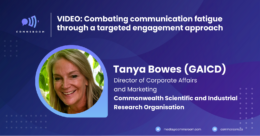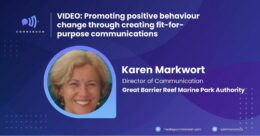Social media has become an invaluable tool for government communications, offering a direct and real-time connection with citizens. This article delves into effective strategies, case studies, and tools that can empower government PR professionals to leverage social media for transparency, engagement, and information dissemination.
1. Transparency and Authenticity
Social media provides a platform for government agencies to share timely and transparent information with the public. Information released in real time and is backed up by reputable agencies gives people a sense that the released reports are authentic and useful. Communicating through social media also provides government agencies ways to stay on the pulse with different communities.
Related Case Study: The U.S. Centers for Disease Control and Prevention (CDC) utilised social media during the COVID-19 pandemic to disseminate accurate information, guidelines, and updates, fostering transparency and trust.
2. Engagement and Two-Way Communication
Foster engagement by actively responding to citizen queries, concerns, and feedback on social media platforms. By using social media and employing social media teams and PR professionals, government agencies can easily respond to unique questions that come up in the heat of the moment, as well as respond to emergency requests and updates.
Related Case Study: The City of Boston’s Twitter account engages citizens by responding to service requests, providing updates, and actively participating in community conversations.
3. Storytelling and Humanising Content
Social media allows government agencies to share human-interest stories, visuals, and multimedia content to humanise government initiatives and connect with citizens emotionally. Content like videos, get-to-know profiles, and employee stories can help the public connect to them on a more sincere and human level.
Related Case Study: NASA’s use of Instagram to share breathtaking images, behind-the-scenes content, and personal stories from astronauts, enhances public engagement and interest in space exploration.
4. Consistent Branding Across Platforms
Posting on social media platforms can help agencies maintain a consistent brand image across various social media platforms to reinforce trust and recognition. Colourways, typefaces, and even tone can help iron out any agency’s branding, so using this strategy on a government department’s official account can prove to be useful.
Application: Use tools like Canva or Adobe Spark to create visually consistent graphics and templates for posts across platforms.
5. Crisis Communication and Rapid Response
Developing a crisis communication plan for social media can ensure rapid response and accurate information dissemination during emergencies. Social media has been used to monitor going-on in various areas in crises situations, so using multiple platforms can help government agencies send aid in times of disasters and emergencies. Rapid response is also a key element to leveraging social media.
Related Case Study: The Queensland Police Service in Australia used social media to provide real-time updates and critical information during natural disasters, showcasing the importance of rapid response.
6. Data Analytics for Informed Decision-Making
Utilising social media analytics tools to track engagement, sentiment, and audience demographics to guide informed decision-making. Movements of certain social media posts on a government agency’s page can tell them so much about certain demographics, and it can also inform them on what truly matters, and which posts are relevant.
Tools for tracking performance and insights:
- Hootsuite
- Sprout Social
- Google Analytics
7. Accessible and Inclusive Content
Social media content is made more accessible to diverse audiences, including those with disabilities, by incorporating alt text, captions, and accessible design principles. Using AI-supported technology like auto-transcriptions and image capturing helps make posts more inclusive and shareable.
Application: Use tools like Microsoft’s Seeing AI or Descript to generate automatic transcriptions for multimedia content.
8. Educational Campaigns and Information Dissemination
Leverage social media to disseminate important information, public service announcements, and educational campaigns. A lot of young people are on social media nowadays, so government agencies can use these platforms to reach out to them in a more educational and memorable manner. Short-form content and quick media bites are best for this approach.
Related Case Study: The Singapore government’s use of TikTok to share COVID-19 safety guidelines creatively and engagingly, reaching a younger demographic.
Government PR professionals can harness the power of social media to foster transparency, engage citizens, and disseminate information effectively. By adopting these strategies, drawing inspiration from case studies, and utilising relevant tools, government agencies can build stronger connections with the public and enhance the overall impact of their communications.
Post Views: 261





























